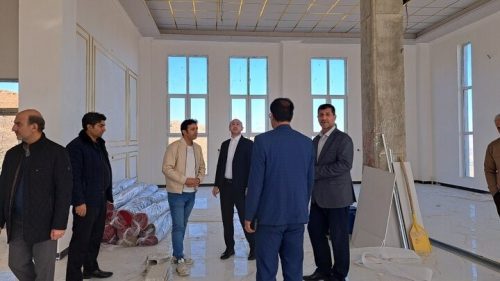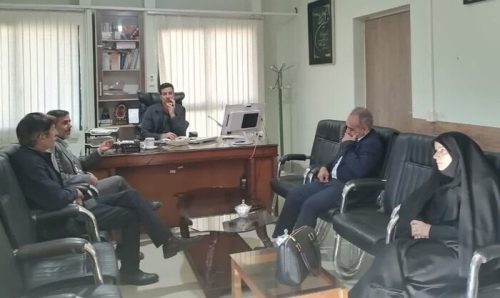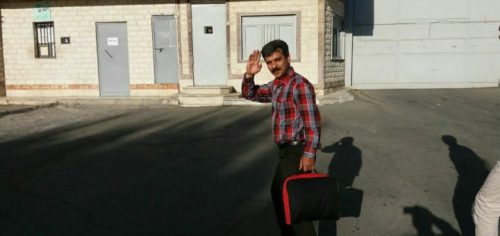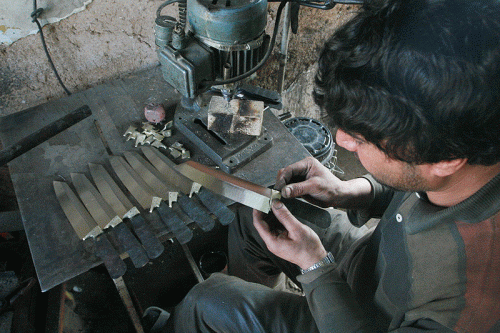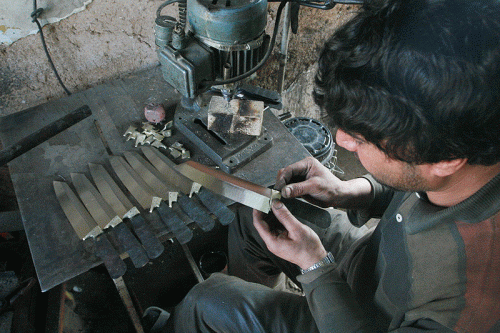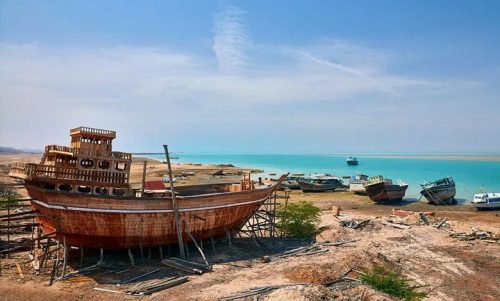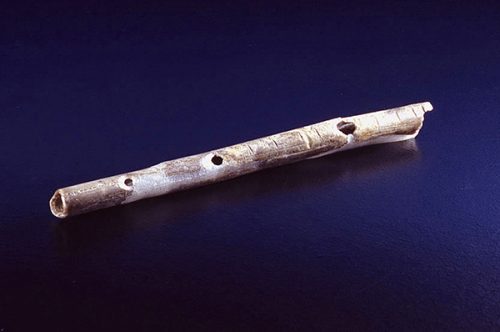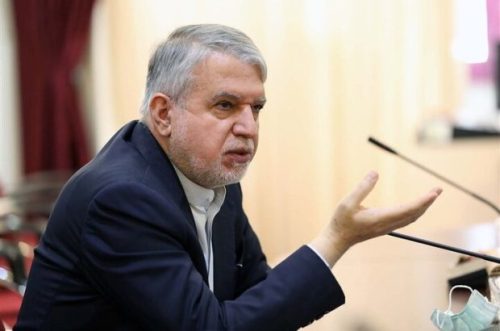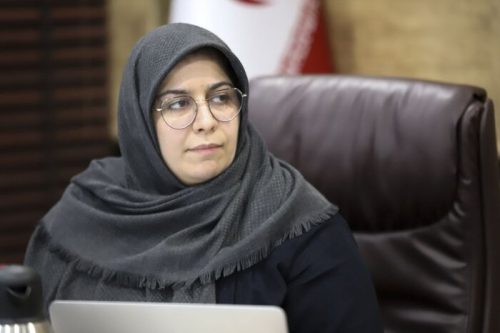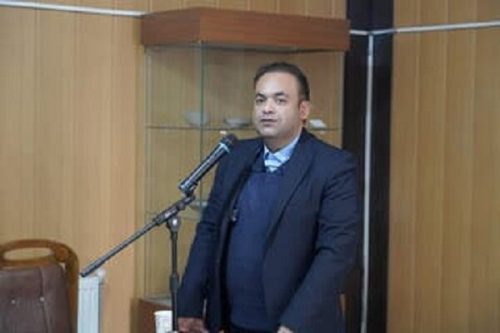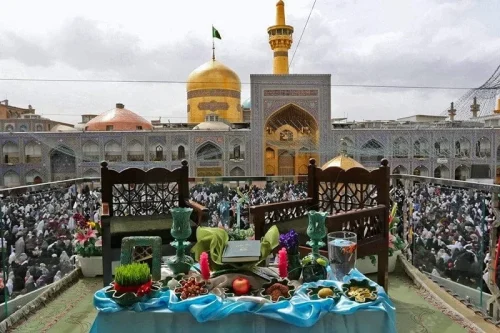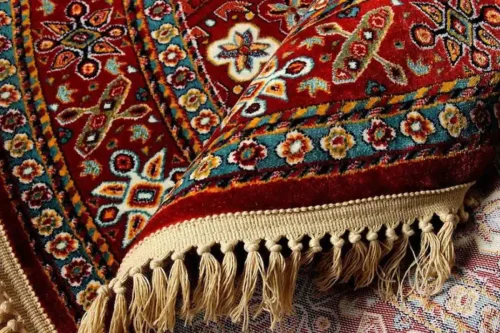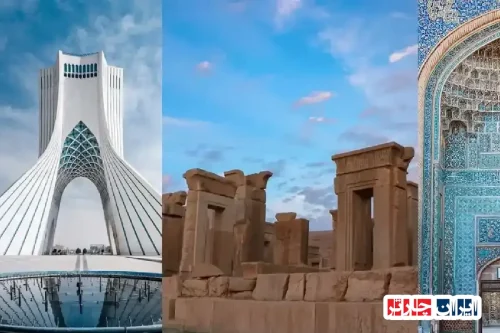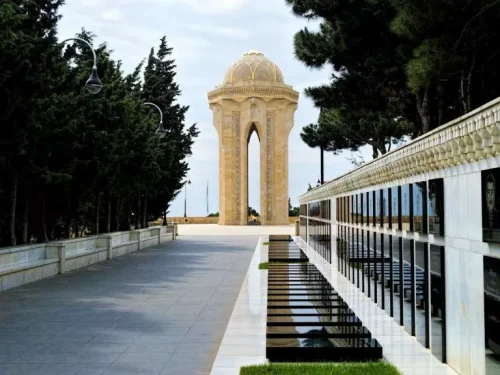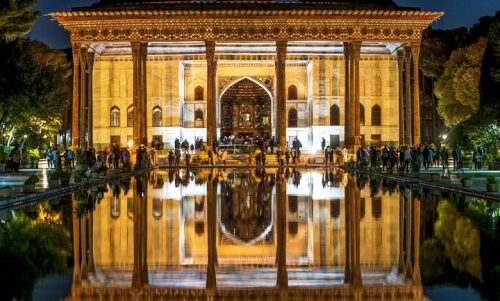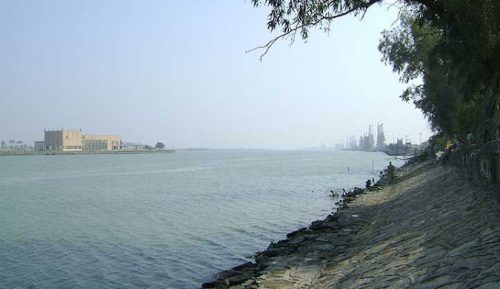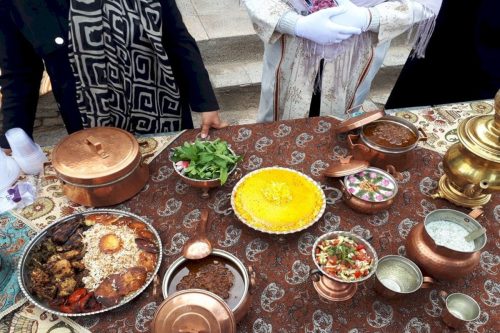Every Cultural Revenue Fuels Preservation of Historic Sites and Museums
In today’s dynamic environment of economic and cultural evolution, the concept that “Every Cultural Revenue Fuels Preservation of Historic Sites and Museums” has grown into a guiding principle for communities worldwide. This idea reflects the understanding that monetary inflows generated by interest in heritage not only support the upkeep and renovation of historical landmarks but also invigorate cultural pride and social cohesion. By channeling income derived from cultural activities, entrance fees, special events, and donations into conservation projects, society reaffirms its commitment to safeguarding tangible records of its past. Throughout history, cultural revenue has provided the means to restore timeworn structures and craft engaging experiences for new generations, ensuring that every artifact and monument continues to tell its unique story. The transformative power behind the mantra “Every Cultural Revenue Fuels Preservation of Historic Sites and Museums” lies in its dual impact. On one hand, financial resources fortify the physical infrastructure of museums, archives, and monuments. On the other hand, they enable innovative programming and educational initiatives that make history accessible to the modern audience. Innovative leadership and thoughtful investment strategies have proven that when funding is allocated with purpose and vision, heritage sites can be revitalized into vibrant centers of learning and community engagement. Cultural revenue can originate from a variety of sources – from art exhibitions and guided tours to community events that celebrate local traditions. Each of these streams contributes to a larger ecosystem, amplifying the message that preservation is possible when economic creativity meets cultural dedication. Moreover, the idea “Every Cultural Revenue Fuels Preservation of Historic Sites and Museums” highlights a sustainable approach to conservation that benefits not just the custodians of history, but the broader public. As communities invest in the protection of historical sites, they simultaneously nurture tourism, stimulate local business, and create new job opportunities. Receiving a steady flow of revenue encourages reinvestment in both maintenance and future projects, ensuring that historical treasures are never lost to neglect. In this light, heritage sites evolve from being static relics of the past into dynamic centers that inspire current and future generations to appreciate diverse narratives and shared legacies. This balanced synergy between conservation and commerce demonstrates that preserving cultural assets can be a self-sustaining venture when driven by an infusion of dedicated funds. The process of managing and maximising cultural revenue requires a thoughtful balance between financial prudence and an unwavering respect for historical integrity. Decision-makers and cultural stewards have learned that transparency in fund allocation, comprehensive planning, and community involvement are essential to success. It is through this conscientious strategy that every invested dollar translates into the physical restoration of weathered facades, the modernisation of exhibition spaces, and the enrichment of archival collections. At its core, the philosophy that “Every Cultural Revenue Fuels Preservation of Historic Sites and Museums” is not about mere economic growth; it is about reinvesting in memories, identity, and a shared cultural future. Advances in digital technology also play a significant role in redefining how cultural revenue is generated and managed. Interactive platforms and online exhibitions create new avenues for engagement, thereby expanding the audience far beyond local borders. Digital fundraising campaigns, membership portals, and virtual tours have the potential to multiply the impact of traditional revenue streams. Through these modern methods, stakeholders can witness in real time how funds are being reinvested into restoration efforts. As an increasing number of institutions adopt these innovative approaches, the philosophy that “Every Cultural Revenue Fuels Preservation of Historic Sites and Museums” continues to evolve into a model for integrating heritage management with the digital age. Such initiatives not only preserve tangible structures but also immortalize cultural narratives through accessible and interactive media formats. One of the many compelling aspects of this sustainable model is the way it motivates communities to participate actively in conservation efforts. Local residents, benefactors, and visitors alike become part of the ongoing story of restoration and preservation. By encouraging community ownership over cultural heritage, every collected revenue stream is seen as a collective effort rather than an isolated transaction. Collaborative projects and public-private partnerships have resulted in groundbreaking models of stewardship where every initiative is celebrated as a shared victory. In this context, the recurring phrase “Every Cultural Revenue Fuels Preservation of Historic Sites and Museums” serves as both an inspiration and a reminder that every contribution, no matter how small, plays an integral role in the grand tapestry of cultural preservation. In practical terms, the realization of this vision involves structured planning and strategic investments. Conservation committees work in tandem with financial experts to ensure that every dollar is allocated effectively. Maintaining historical sites demands an ongoing commitment to preventative maintenance, emergency restorations, and regular updates to safety and accessibility standards. Funds generated through cultural revenue not only address the immediate needs of restoration projects but also help build long-term maintenance plans that can withstand the test of time. The cycle of investment nurtures an environment where legacy and modernity coexist in harmony—a place where every visitor is reminded that “Every Cultural Revenue Fuels Preservation of Historic Sites and Museums” through tangible improvements and ever-evolving programs. Furthermore, by integrating educational programs, interactive exhibits, and community workshops into the fold, heritage institutions transform into inclusive spaces that resonate with audiences of all ages. These initiatives help disseminate knowledge about history, art, and architecture, ensuring that costly lessons from the past offer guidance for a responsible future. When community members experience firsthand the fruits of reinvestment—be it through newly restored lighting in a centuries-old gallery or the unveiling of a meticulously conserved artifact—they form a deeper connection with their cultural identity. Thus, the message that “Every Cultural Revenue Fuels Preservation of Historic Sites and Museums” not only reinforces the importance of maintaining our physical heritage but also encourages lifelong engagement with our cultural narratives. As heritage institutions continue to innovate and adapt to evolving community needs, the role of cultural revenue becomes increasingly central. New partnerships with local artists, educational institutions, and even global organizations have introduced creative financing models that transcend traditional funding mechanisms. Crowdfunding projects, limited-edition merchandise, and special commemorative events add layers of financial resilience to these initiatives. Each of these ventures reiterates the fact that “Every Cultural Revenue Fuels Preservation of Historic Sites and Museums” and that a proactive approach can overcome budgetary constraints and unexpected challenges. By leveraging diverse revenue streams, institutions are better equipped to face economic fluctuations while staying committed to long-term conservation goals. It is important to note that while financial support is indispensable, the heart of heritage conservation lies in the passion and dedication of those who care about their cultural legacy. Volunteers, local historians, and community leaders continuously remind us that preservation is a shared responsibility. Whether it is through grassroots fundraising efforts or high-profile sponsorship deals, the driving force behind every successful restoration project remains the collective belief that every cultural dollar matters. In every discussion, every planning session, and every celebratory event marking a restoration milestone, the fundamental truth holds: “Every Cultural Revenue Fuels Preservation of Historic Sites and Museums”. This ethos, when embraced widely, paves the way for a future where history is not only remembered but is celebrated dynamically in everyday life. In conclusion, the comprehensive strategy that intertwines economics with heritage conservation presents a blueprint for sustainable development. Long-term planning, community engagement, and technological advancement all contribute to a scenario where historical treasures are not relegated to the past but actively enriched by the present. As cultural institutions worldwide continue to draw upon their legacy and adapt to new challenges, the reminder that “Every Cultural Revenue Fuels Preservation of Historic Sites and Museums” remains both a call to action and a testament to what can be achieved when dedication meets innovation. This holistic approach ensures that our shared cultural assets will be preserved not merely as relics but as living embodiments of our collective heritage, inspiring future generations to cherish and build upon the rich tapestry of our past.
cultural heritage income-Iran Charter
museum funding strategies-Iran Charter
historic site preservation-Iran Charter
Allocation of Cultural Heritage Revenue to Historic Buildings, Sites, and Museums – Every Cultural Revenue Fuels Preservation of Historic Sites and Museums
In today’s rapidly evolving cultural landscape, the concept that “Every Cultural Revenue Fuels Preservation of Historic Sites and Museums” stands as a testament to the commitment required to sustain our inherited legacies. Across communities, the systematic allocation of funds generated by cultural initiatives has become a critical factor in ensuring that historic buildings, significant sites, and museums continue to inspire and educate future generations. This process involves careful planning and a structured approach that aligns budgetary distributions with restoration projects, technological enhancements, and program development aimed at reinforcing the historical narrative. By channeling revenues derived from ticket sales, special exhibitions, community fundraisers, and private donations, stakeholders are able to maintain a fine balance between conservation and modernization. Moreover, a transparent allocation framework is crucial in building trust among investors, governmental bodies, and local communities committed to cultural preservation. As these resources flow into conservation efforts, they not only maintain the physical crux of our cultural identity but also empower curators and historians to develop engaging programming that reflects both tradition and innovation. At the heart of this approach lies the philosophy that every single dollar invested in cultural heritage initiatives reaffirms our collective responsibility to preserve cherished landmarks, ensuring that both the physical and intangible facets of our history are accessible for educational pursuits and public enlightenment.
Financial and Managerial Policies in the Field of Cultural Heritage Revenue – Every Cultural Revenue Fuels Preservation of Historic Sites and Museums
Sound financial and managerial policies are indispensable for the sustainable management of cultural heritage revenue. As funds are accumulated through diverse cultural activities, a robust framework is needed to oversee their proper allocation and accountability. In many regions, comprehensive multi-year strategies have been developed, illustrating how predictive budgeting and fiscal responsibility can facilitate long-term preservation projects. Such strategies generally involve setting specific financial targets, establishing legal and institutional support mechanisms, and employing performance metrics that ensure every contribution aligns with the guiding principle that “Every Cultural Revenue Fuels Preservation of Historic Sites and Museums.” Within this context, government agencies, private partners, and non-profit institutions coordinate closely to implement policies that optimize resource distribution and promote cultural entrepreneurship. Well-articulated managerial policies not only streamline internal operations but also foster an environment where innovation meets tradition. Effective policies address the challenges posed by fluctuating cultural investments by instituting safety nets and reserve funds that can buffer against economic downturns. Through regular audits, transparent reporting, and community stakeholder engagement, these policies help maintain fiscal discipline, while also providing the flexibility needed to seize emerging preservation opportunities. Ultimately, the goal is to create an ecosystem where financial solidity is complemented by visionary leadership and operational excellence, ensuring that every cultural dollar translates into enhanced sustainability of historical sites and museums.
Utilizing Modern Technologies in Managing Cultural Heritage Revenue – Every Cultural Revenue Fuels Preservation of Historic Sites and Museums
Advancements in modern technologies have revolutionized the way we manage revenue in the cultural heritage sector, making it more efficient and transparent than ever before. Digital tools such as online fundraising platforms, real-time monitoring systems, and comprehensive data analytics have become instrumental in ensuring that each financial contribution is tracked and allocated effectively. In this environment, the maxim “Every Cultural Revenue Fuels Preservation of Historic Sites and Museums” is realized through innovative technological solutions that facilitate detailed oversight of restoration projects and exhibition enhancements. For example, many institutions now utilize integrated software systems that combine ticketing, membership management, and donor tracking, thereby creating a seamless interface between revenue generation and its reinvestment within cultural projects. These digital systems enable managers to evaluate the performance of various revenue sources, optimize spending, and provide stakeholders with clear insights into how funds are being used. Furthermore, technology helps bridge the gap between remote contributors and physical sites through virtual tours, interactive exhibits, and augmented reality experiences, thereby expanding the reach of cultural institutions beyond geographical boundaries. By embracing such technological innovations, heritage managers are better equipped to navigate complex fiscal challenges, ensuring that every advanced method is leveraged towards the preservation and sustainable development of historic sites and museums.
Impact of Cultural Heritage Revenue on Sustainable Tourism – Every Cultural Revenue Fuels Preservation of Historic Sites and Museums
The intersection of cultural heritage revenue and sustainable tourism presents a unique opportunity to foster both economic growth and long-term preservation of historical assets. By investing in cultural sites and museums, communities create multi-dimensional experiences that attract tourists from around the globe, thereby contributing to a virtuous cycle of investment and conservation. The guiding principle that “Every Cultural Revenue Fuels Preservation of Historic Sites and Museums” is vividly illustrated when enhanced heritage sites become the cornerstone of regional tourism, driving the development of local businesses, artisanal crafts, and hospitality sectors. This symbiotic relationship not only elevates the cultural narrative but also incentivizes further cooperation between public authorities and private investors to expand infrastructure and improve visitor experiences. Sustainable tourism strategies, including eco-friendly transport, localized food initiatives, and immersive cultural tours, are designed to complement preservation efforts, ensuring that historical sites remain vibrant centers of community pride and economic opportunity. In this context, the sustainability of cultural tourism is achieved through a smart reinvestment of revenue, where every ticket sold or donation made contributes to the long-term safeguarding and enhancement of cultural landmarks.
Examining Successful Models in International Cultural Heritage Revenue Management – Every Cultural Revenue Fuels Preservation of Historic Sites and Museums
Across the globe, various models of cultural heritage revenue management have emerged as shining examples of effective conservation strategies. These successful case studies demonstrate that with strategic planning and a commitment to the principle that “Every Cultural Revenue Fuels Preservation of Historic Sites and Museums,” remarkable restoration projects and innovative preservation programs can be established. In many countries, pioneering institutions have adopted integrated financial models that combine public funding, private sponsorship, and community-driven initiatives, yielding a robust and resilient economic base for heritage preservation. International collaborations, cross-border partnerships, and knowledge exchange program are frequently cited as key factors in replicating these success stories across diverse cultural landscapes. These models typically rely on clear governance structures, transparent reporting practices, and a deep understanding of both local heritage nuances and global tourism trends. They also emphasize sustained community engagement, ensuring that the local populace takes an active role in preserving cultural sites. By analyzing and adopting these internationally proven methods, cultural institutions can refine their own revenue management strategies, thereby securing sustainable funding channels that enhance the preservation, restoration, and presentation of historical treasures.
International Collaboration and Knowledge Transfer in Cultural Heritage Revenue Management – Every Cultural Revenue Fuels Preservation of Historic Sites and Museums
In an increasingly interconnected world, international collaboration serves as a cornerstone for enhancing the management of cultural heritage revenue. The exchange of ideas, best practices, and technological innovations across borders reinforces the commitment that “Every Cultural Revenue Fuels Preservation of Historic Sites and Museums.” Through multinational forums, collaborative workshops, and digital knowledge-sharing platforms, cultural institutions are able to collectively address challenges and identify opportunities for improved fiscal management and heritage conservation. Such partnerships foster an environment where experiences from diverse cultural contexts contribute to developing unified strategies for budgeting, investment prioritization, and community engagement. Moreover, global networks facilitate access to a broader pool of expertise, enabling institutions to implement internationally benchmarked policies that drive sustainability. These collaborations often result in joint funding initiatives, research projects, and cultural exchange programs that not only enhance the operational capacity of individual institutions but also contribute to the overall resilience of the sector. Ultimately, the integration of international knowledge and cooperative frameworks empowers cultural custodians worldwide to leverage every cultural dollar for the lasting preservation and dynamic presentation of historic sites and museums.
Current Challenges and Innovative Solutions in Harnessing Cultural Heritage Revenue – Every Cultural Revenue Fuels Preservation of Historic Sites and Museums
Despite the many advantages offered by cultural heritage revenue, institutions continuously face challenges that hinder optimal fund utilization and long-term sustainability. Common issues include limited funding pools, economic fluctuations, and the growing demands for modernization amid preservation needs. To overcome these obstacles, stakeholders have embraced innovative solutions that align with the belief that “Every Cultural Revenue Fuels Preservation of Historic Sites and Museums.” These solutions range from adopting sophisticated financial management tools and diversifying revenue streams to encouraging community-based fundraising initiatives and public-private partnerships. By implementing smart technological systems, institutions can better track income sources, forecast funding trends, and prioritize expenditures based on immediate and future preservation needs. Additionally, innovative project financing methods such as crowdfunding campaigns and special commemorative events have emerged as effective ways to supplement traditional funding channels. The integration of these creative strategies, bolstered by transparent administrative practices, serves to minimize fiscal uncertainties and bolster the reinvestment cycle. This proactive approach enables cultural stewards to not only confront present challenges head-on but also lay a robust foundation for addressing future fiscal demands, ensuring that historic sites and museums continue to thrive and inspire.
Development of Tourism Infrastructure Based on Cultural Heritage Revenue – Every Cultural Revenue Fuels Preservation of Historic Sites and Museums
A strategic focus on developing tourism infrastructure intertwined with cultural heritage revenue creates exciting opportunities for regional and national economic renewal. By leveraging funds from various cultural initiatives, communities can invest in sustainable infrastructure projects that enhance visitor experiences and amplify the prominence of historic attractions. The principle that “Every Cultural Revenue Fuels Preservation of Historic Sites and Museums” remains central as investors and planners work to create an ecosystem where dynamic tourism infrastructure, including visitor centers, interpretive displays, and modern amenities, meets traditional conservation practices. This integrated approach not only attracts a broader spectrum of tourists—ranging from heritage enthusiasts to casual visitors—but also provides local economies with a long-term revenue stream that supports continuous heritage maintenance. Strategic investments in transportation, digital interfaces, and guided tour technologies further bridge the gap between ancient history and modern accessibility. Through combined efforts from both public and private sectors, tourism infrastructure projects can be tailored to respect and enhance historical sites while simultaneously contributing to job creation, local craftsmanship, and broader cultural awareness. Over time, these investments pave the way for a sustainable model, ensuring that every cultural contribution leads directly to improved accessibility and enriched visitor experiences.
Future Outlook and Strategies in Cultural Heritage Revenue Management – Every Cultural Revenue Fuels Preservation of Historic Sites and Museums
Looking toward the future, the management of cultural heritage revenue must evolve to address emerging challenges while harnessing new opportunities. With rapidly advancing technology, shifting economic landscapes, and an ever-growing public interest in heritage, strategic planning becomes indispensable for ensuring that “Every Cultural Revenue Fuels Preservation of Historic Sites and Museums.” Future strategies are likely to focus on increased digital engagement, comprehensive data analytics, and enhanced cooperation among cultural institutions, investors, and local communities. Emphasizing long-term sustainability, these forward-thinking approaches include the adoption of robust governance models that integrate traditional preservation methods with modern fiscal practices. Institutions are now more inclined to leverage innovative financing techniques, such as micro-donation platforms and collaborative funding networks, to secure a steady inflow of resources. Furthermore, strategic partnerships with global networks will facilitate the transfer of knowledge, thereby enriching local expertise and bolstering adaptive planning for heritage conservation. As cultural custodians continue to refine their operational frameworks, the integration of smart technology alongside community-driven initiatives will not only safeguard historical sites but also transform them into dynamic centers of learning and cultural celebration. This progressive outlook ensures that legacy preservation remains an ongoing, inclusive process that bridges the past with a promising future.
Frequently Asked Questions
- What does cultural heritage revenue include?
- Cultural heritage revenues include the proceeds from visits to historical sites, museums, and activities related to cultural tourism.
- What are these revenues allocated for?
- All obtained revenues are dedicated to funding the maintenance, restoration, and revival of historical sites and museums.
- What is the importance of allocating revenue to cultural infrastructures?
- This allocation helps preserve cultural identity, improve the upkeep of historical monuments, and promote cultural tourism nationwide.
- What initiatives are taken by organizations responsible for cultural heritage?
- These organizations implement restoration programs, manage the renovation of historical sites, develop long-term cultural plans, and coordinate with relevant bodies.
- How are restoration projects financed?
- The majority of the costs for restoring and preserving historical sites are covered by revenues from cultural tourism and museum visits.
- What is the role of museums in utilizing cultural heritage revenues?
- Museums utilize these funds to host exclusive exhibitions and offer diverse educational and cultural services to the public.
- What actions are in place for the preservation of historical monuments?
- Measures include focused maintenance, restoration efforts, and establishing oversight committees to ensure the security of historical sites.
- How are cultural tourism programs developed?
- Through long-term planning, infrastructure improvements, and increased public awareness, efforts are made to boost visitation and promote local culture.
- How is philanthropic participation facilitated in enhancing cultural heritage?
- Organizing regular conferences with philanthropists and allocating portions of revenue for non-governmental support are key strategies.
- What strategies exist for advancing cultural heritage projects?
- Cooperation between governmental and non-governmental bodies, the development of five-year plans, and continuous monitoring of projects are effective strategies.
- How does the government support cultural heritage?
- The government allocates special budgets, enacts national documents, and provides legal safeguards to enhance the protection of cultural and historical sites.
- What projects are underway for the development and preservation of museums?
- Ongoing projects include revamping exhibition areas, incorporating modern technologies for content presentation, and hosting cultural events.
- How is public awareness about the preservation of cultural heritage increased?
- Educational campaigns, the use of various media outlets, and community cultural activities work together to enhance public understanding of cultural heritage.
- How does public participation impact the preservation of historical sites?
- Active community involvement leads to better maintenance, increased restoration efforts, and a greater sense of responsibility among citizens.
- What are the benefits of allocating revenue to cultural and historical institutions?
- Such allocation improves the quality of services, strengthens cultural infrastructures, and optimizes the use of resources in cultural tourism.
- How is feedback from cultural heritage program implementations evaluated?
- Regular evaluations, specialized surveys, and assessments of economic and cultural outcomes are used to measure the success of these initiatives.

